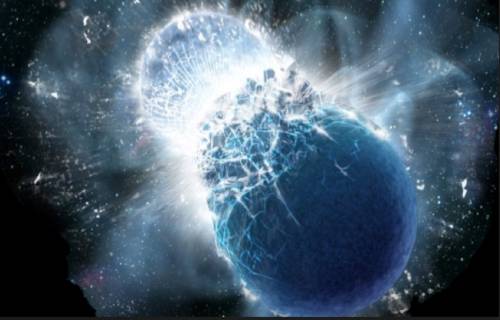 Twenty-nine research groups have received major grants from the European Research Council (ERC) to address challenging multidisciplinary research problems.
Twenty-nine research groups have received major grants from the European Research Council (ERC) to address challenging multidisciplinary research problems.
Professor Padraig Dunne, UCD School of Physics, and HEAVYMETAL collaborators in Denmark, Germany and Belfast, are recipients of € 11.3 million in ERC Funding for their research on neutron stars.
Dunne and his team are the first to receive an ERC Synergy grant for STEM in Ireland. A leading spectroscopist in the area of laser plasma emission and absorption spectroscopy, his work has previously been funded through the SFI Principal Investigator grants and IRC PhD scholarships, amongst others. The HEAVYMETAL team at UCD includes Prof. Emma Sokell, Dr Tom McCormack, Dr Fergal O'Reilly and Dr Patrick Hayden, with the support of the UCD School of Physics.
Prof. Padraig Dunne said: “It is a thrill to be part of this fascinating project, funded by the ERC. Since the inception of astrophysics, spectroscopy has made critical contributions to our understanding of remote objects and events in the Universe. Our team in the Spectroscopy Lab at the UCD School of Physics will use our experience with laser produced plasmas, combined with new and recently developed spectroscopy techniques, to provide fundamental atomic data. The data will make a key contribution to our understanding of Kilonovae and the physics of the formation of the heavy elements.
“One of the nicest aspects of the HEAVYMETAL Synergy award is that we will be working with a diverse team of physicists, each of whom brings something unique, yet essential, to the project. The six -year award gives both the time and the resources to tackle one of the outstanding questions in Astrophysics.”
The ERC Synergy grants support small groups of Principal Investigators to jointly address ambitious research problems that could not be addressed by the individual principal investigators and their teams working alone.
Almost 360 proposals were submitted in this first ERC Synergy Grant call under the EU’s Horizon Europe programme. The funding, worth in total 295 million euro, will help outstanding researchers bring together complementary skills, knowledge and resources, and create some 1,000 jobs for postdoctoral fellows, PhD students, and other staff in the grantees' research teams.
Mariya Gabriel, European Commissioner for Innovation, Research, Culture, Education and Youth, said: “The ERC’s trademark is long-term funding to individual top researchers. But some problems are too big for the most outstanding minds to address alone. These new grants will enable scientists to join forces and follow their curiosity together across disciplinary boundaries. They are set to gain insights that will help us understand the world around us and to face future challenges. Congratulations and good luck to all the grantees!”
The President of the ERC, Professor Maria Leptin, said: “I’m happy to see more pioneering researchers funded to focus on ambitious and complex scientific problems that require innovative ways to advance our knowledge. It takes the best researchers, each with unique expertise and approaches, to jointly tackle such challenges. The Synergy Grants help to tap into international talent both in Europe and around the world. I congratulate the successful applicants and look forward to seeing the results these collaborative efforts can bring!”
What is HEAVYMETAL?
Neutron stars are the remnants of catastrophic stellar core collapse. They have extremely strong gravitational fields, high-density matter, and extraordinary electromagnetic field strengths, making them important natural laboratories for fundamental physics. Merging neutron stars offer these extreme characteristics but in a hot collision where a significant mass of neutron-rich matter is expelled in relativistic outflows. This matter develops as a radioactive fireball, which is visible as a kilonova.
Kilonova science is emerging as a new field in astrophysics, offering an enormous discovery space for understanding neutron stars, the origin of the elements, the physics of exotic heavy nuclei, and the phases of hot, ultra-dense, and exotic matter. The increasing sensitivity of gravitational wave detectors, also providing improved sky localisations for follow-up observations, and the next generation of telescopes, means that we expect an abundance of new kilonovae in the coming years.
HEAVYMETAL aims to make a big step in explaining these explosions of nuclear matter by spectroscopically dissecting kilonovae and connecting them quantitatively to the physical properties of the neutron star merger. In doing so, they will probe the origin of the heavy elements, and delineate the nuclear and astrophysical pathways that created them – the so-called ‘r-process’.
For the first time ever, the team will try to decipher the details of the observed spectra and use that information to gain unprecedented insight into the physical processes of the merger. HEAVYMETAL brings together experts in each of the pivotal areas who, together, can push significantly beyond the current state-of-the-art.
HEAVYMETAL Researchers and host institutions:
- Darach Watson, University of Copenhagen, Denmark
- Andreas Bauswein, GSI Helmholtzzentrum für Schwerionenforschung, Germany
- Padraig Dunne, University College Dublin, Ireland
- Stuart Sim, Queen’s University, Belfast, the UK
Darach Watson has been a key player in the major discoveries associated with observations and interpretation of kilonovae and has worked with rapid response follow-up data for two decades.
Andreas Bauswein and his team have a long and high impact track record in connecting advanced hydrodynamical simulations of mergers and their different ejecta components to r-process nucleosynthesis, kilonova modelling and high-density matter constraints.
Padraig Dunne is a leading spectroscopist in the area of laser plasma absorption spectroscopy with demonstrated expertise in heavy element spectroscopy and the manipulation of laser plasmas to maximise the presence of specific atomic ions.
Stuart Sim is an expert in the modelling of radiative transfer for explosive environments and a leader in the development of the world-leading ARTIS and TARDIS codes, designed to simulate detailed radiation-matter interactions and photon transport in high-velocity, metal-rich ejecta.
See the full ERC Press Release.